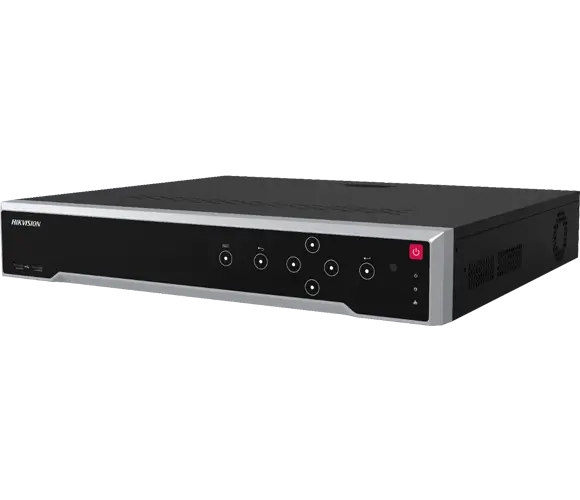- HOME
- PRODUCTS
- SOLUTIONS
- SIRA Certified CCTV
- Mobile Attendance APP
- Payroll Software
- Attendance Management
- Cloud Attendance Solutions
- Access Control Management
- Automatic Parking Barrier
- User Activity Monitoring
- Employee Productivity
- Investigate Employees
- Deter Insider Threats
- Analytics & Monitoring
- Cyber Safety
- Cloud Anti-Virus Software
- COMPANY
- CONTACTS
CCTV Video recorders are electronic devices that receive video signals from connected CCTV cameras & in turn store the video recording footage or CCTV footage into a storage medium such as a hard disc or even into a cloud storage.

- Connects Analog CCTV Cameras
- Audio & Video Recording
- Remote Access to Video Footage
Learn More
- Connects IP CCTV Cameras
- Adaptive Recording with H.265 Compression
- Seamless Integration with multiple security devices
Learn MoreWith the continually increasing requirements of surveillance security there is a demand for adaptive surveillance solutions to cater multi-level as well as multiple locations sites and to ensure simplicity of surveillance management at the same time. HEYCE offers cost-effective surveillance solutions with industry leading features and improved visibility. This helps our customers effectively control and safeguard their enterprise, hospitals, hotels, banks, or other environments, with intelligent surveillance and video management tools to protecting your valuable assets.
A video surveillance system is a vital component for ensuring safety and security of every premise. With a variety of security systems now available, it is crucial to choose the perfect system for your video surveillance requirement, with the right type of camera and related video recording equipment. Network video recorder (NVR) and digital video recorder (DVR) are the two types of video surveillance systems commonly used. Both the systems have gained acceptance owing to their beneficial features, but this largely depends on each application requirements
DVR Systems
- DVR Basics
DVR systems are designed to record surveillance video in a digital format. DVR systems costs lower than NVR systems which contributes to the DVR being more suitable especially for small or domestic applications which do not involve long-distance data transfer or integration requirements with other ELV systems using IP technology. - Supported Cameras
All DVR system work with analog cameras. The connected analog cameras are responsible for streaming an analog signal to the recorder, which then processes the video and audio data. Analog cameras also cost lower than IP cameras that helps lower the overall cost of CCTV implementation. - DVR Connectivity
Coaxial cables are used to connect analog cameras to the DVR system. Coaxial cables do not support power transmission required to power the connected cameras. Due to this a secondary cable is used to carry the electrical signals, while the coaxial cable carries data signals for video transmission. Coaxial cables are stiffer and wider than Ethernet cables, making installation a challenge. - Key Benefits of DVR
The main benefits of using DVR include low cost of ownership, low bandwidth usage, standalone as well as networked function and signal stability.
DVR Systems
- NVR Basics
NVR is a scalable network-based surveillance system that includes a software program for recording video in a digital format into storage devices such as a hard disk drive, USB flash drive, SD memory card etc. Due to its integration capabilities with other ELV security systems, NVR systems are preferred over DVR type CCTV surveillance solutions. - Supported Cameras
NVR system connects IP cameras that function as standalone image capturing devices. These cameras are capable of processing video data at camera level before sending it to the recorder or NVR. IP cameras are robust, and capable of recording as well as transmitting audio signals along with the video. Advanced hardware and functionality on these cameras improves intelligent video analytics such as license plate (ANPR) and facial recognition. - NVR Connectivity
The NVR surveillance system uses standard Ethernet cables such as Cat5 and Cat6 to connect the IP cameras to the recorder. These cables are easier to set up due to their smaller size and shape. Besides ethernet cables are cost-effective and more commonly availability compared to coaxial cables. - Key Benefits of NVR
The main benefits of using NVR include better image quality, easy installation, greater integration capabilities with other IP based ELV systems like alarm, access control etc., higher storage capacity and larger camera connectivity.
Tribrid DVRs or XVRs are digital video recorders that allow the transmission of HD over coax video types. Tribrid DVR or XVR also allow connectivity and recording of IP cameras over a network or by using a PoE switch.
Connectivity
Usually, XVRs connect with several coaxial BNC cameras and then allow connection of additional IP camera cameras. For example, an 8 channel XVR has 8 BNC inputs for coaxial cameras and can support an additional of 4 IP cameras. For each IP camera that you want to use beyond the extra 4, you need to switch a coaxial channel to IP.
Compatibility
It is important to note that the IP cameras connected with XVR are compatible. The recorder must support the manufacturer, resolution, and bitrate of the IP cameras you want to use. Most XVRs allow around 4 Mbps encoding bandwidth for each connected IP camera. This means that 4K IP cameras, if supported, must be set to a lower encoding bitrate.
NVRs and DVRs are both great choices for a reliable security camera surveillance solution. DVRs and NVRs provide similar resolution, but DVRs offer a lower cost alternative. The biggest deciding factor will depend on your cabling preferences. If there is existing cabling that is already in place it and it is good quality RG59 coax, it will sway your decision towards a DVR if you want to keep the existing cameras and add few HD IP cams if needed. However, if replacing the cable is a task that you're comfortable with, then an NVR would be the way to go as network cable provides the simplicity due to use of PoE.
DVR Channel Selection
At a requisite rate of 1 channel per camera, the DVR channel count should be decided based on the current as well as anticipated future camera counts. 4-Channel, 8-Channel, 16-Channel, 32-Channel & 64-Channel DVR types exists and up to 128-Channel NVR types are available
High Definition - HD DVR
HD CCTV DVR types are most recommended in high security environments such as Jewellery outlets, Banks, Cash & Payment counters, Vehicle license plate identification requirements etc. HD DVR models must be connected to HD CCTV Cameras to achieve optimum performance.
Network video recorder – NVR
Network video recorders are different from digital video recorders (DVR) as their input is from a network rather than a direct connection to a camera. Also, the video must be processed at the camera level and sent to the NVR, unlike DVR models that process the video at the DVR level. NVR setup can be achieved at a software platform & it doesn’t require a separate hardware to function. However, to obtain optimum security levels, such software is run on a dedicated device, usually with its own embedded operating system
DVR |
NVR |
|---|---|
PROS | |
Works with existing analog / coaxial based cameras |
Flexible to work variable types of Security Cameras connected to the network |
Less complex setup and troubleshooting |
Support resolutions of 8MP and 12MP |
More affordable and easy maintenance |
4K at 30fps available |
Does not need IP address to be assigned to each camera |
Allow cameras from an accessible IP address to be recorded |
|
Two-way voice communication and video analytics |
CONS |
|
4K is limited to 7fps or 15fps |
More complex to troubleshoot |

